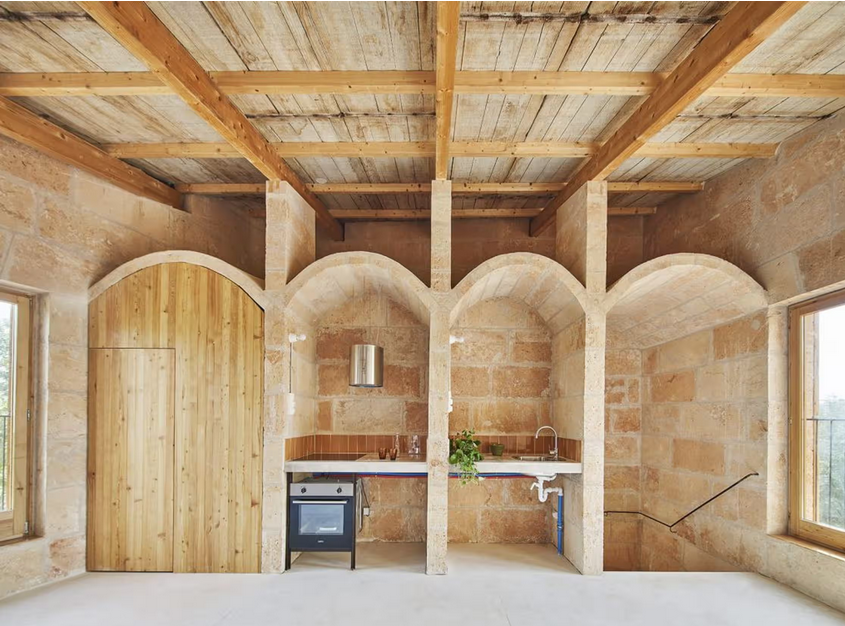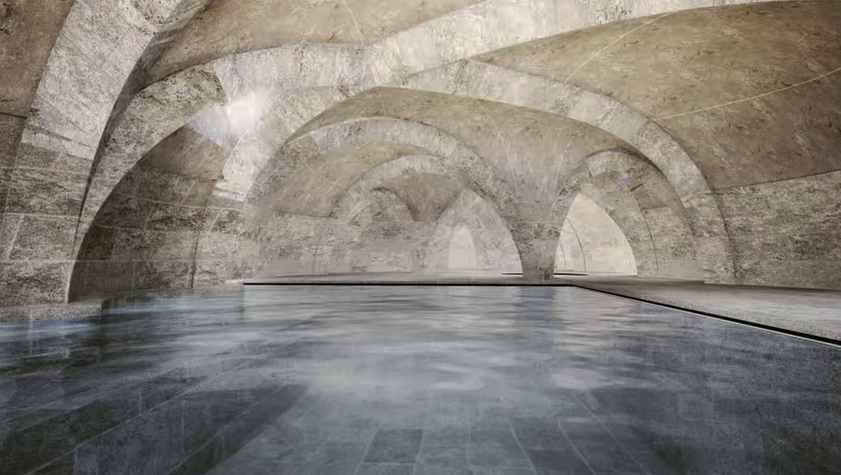Stone is strong, plentiful and fireproof, as well as beautiful. Using stone requires low levels of energy and low emissions of greenhouse gases. It is one of the most ancient building materials known to humanity, the stuff of dolmens and temples and cathedrals.
Unfortunately stone has been supplanted in the industrial era by steel, concrete and mass-produced bricks, and is used (if at all) mostly as a thin cosmetic facing, while the hard work of holding up a building is done by the upstart alternatives. Any form of the material – limestone, sandstone, basalt, granite – can, depending on its properties, be used.

The strength of stone compares well with steel and concrete, yet its environmental impact is far lower. The latter require several different energy-consuming activities, including extraction, smelting, transport, processing and installation. Stone only needs to be cut out from a quarry, taken to a site and put in place. Where the many ingredients of steel and concrete require multiple holes to be dug in the ground, not to mention such things as blast furnaces and rolling mills, the stonework for a given project only needs one.
The planet is made mostly of stone and it should almost always be locally available, which keeps the environmental costs of transport down. The material is long-lasting and recyclable.

At the same time, 21st-century engineering allows stone to be used more effectively than ever before. The material is naturally strong in compression – that is, when loads are pushed down on it – which means it is good for walls, columns and arches, but less so if it is stretched or bent, as in beams or floor slabs. It is now possible to combine stone with a (sparing) use of steel such that it can perform like reinforced concrete.
Stone is often seen as a luxury item, something for the homes of the one-per-centers. Its use in other countries on relatively low-cost projects shows that it can also be a material for everyday purposes.
You can cut stone into bricks at the same cost or cheaper than the more usual fired-clay kind, with less than one fortieth of the carbon emissions, which has led to 10 quarries offering them as a commercial product.
The great thing about stone is that, having been used for millennia, it’s well tested. It’s conceivable, indeed, that the era of concrete will prove only an interlude in the far longer history of stone. Such a shift won’t happen easily, but it’s an outcome worth striving for.
You can read the original article at www.theguardian.com


Stone, it was good enough for medieval castles and cathedrals, ancient temples, palaces and mansions prior to the 20th century, Scottish and Irish cottages, bridges, tombs, etc, so it’s certainly good enough for modern buildings! Heck, even some of the earliest SKYSCRAPERS were built with stone outer walls!